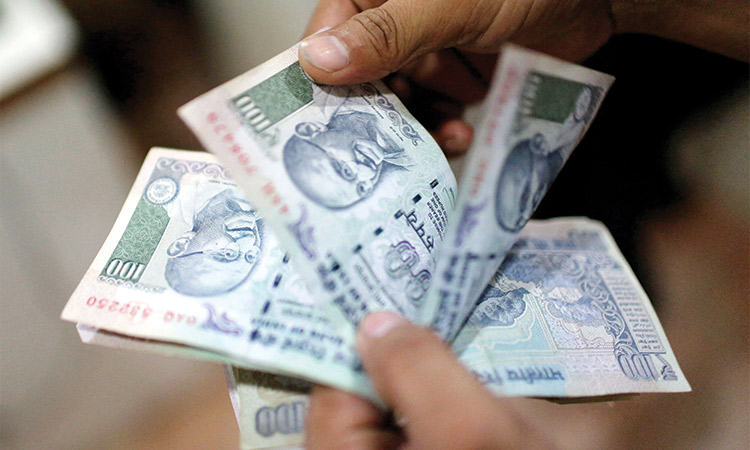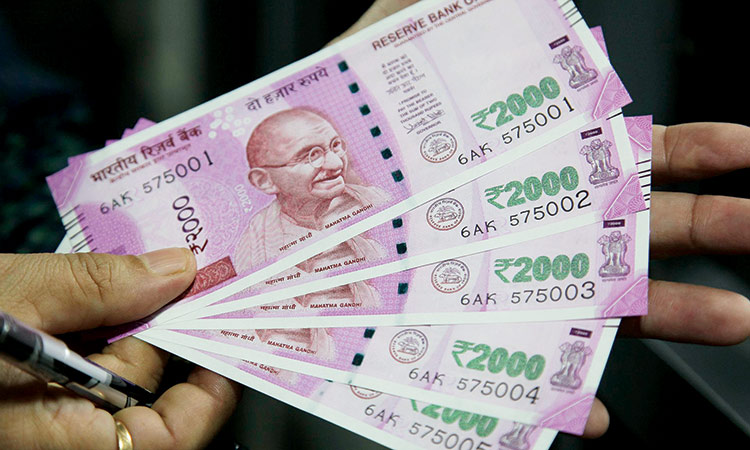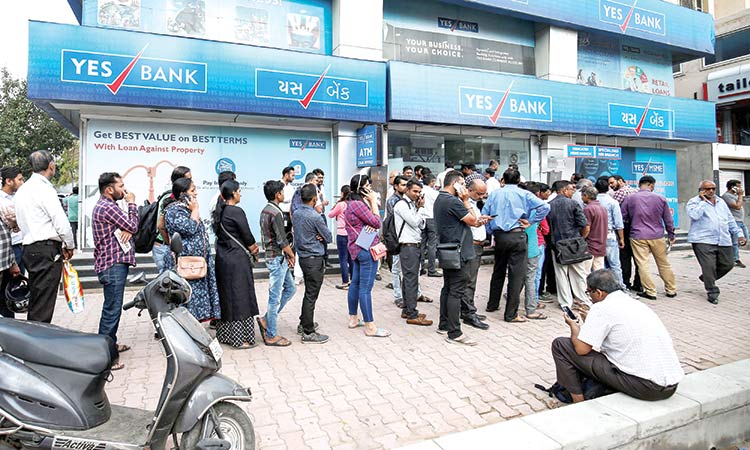Indian banks see ‘moderate growth’ in deposits, ‘deceleration in credit’

An employee counts Indian rupee currency notes inside a private money exchange office in New Delhi. File/ Reuters
Hajra also anticipates a moderate acceleration of deposit growth and a deceleration of credit growth in 2024 relative to 2023, which will result in a system-wide reduction in the credit deposit ratio. The sector will also experience a moderate decline in the net interest margin next year.
He speaks about the likely head/tail winds, merger possibilities, trends and other aspects that the Indian banking industry might face in 2024.
“In light of the RBI’s pause of monetary tightening, satisfactory levels of capitalisation and loan loss provisioning by the banking sector, sustained robust gross domestic product (GDP) growth, and a substantial softening of retail inflation, particularly core inflation, the Indian banking sector’s outlook for 2024 appears robust and healthy.” Hajra added.
We anticipate a moderate acceleration of deposit growth and a deceleration of credit growth in 2024 compared to 2023, which will result in a system-wide reduction in the credit deposit ratio. Although the transmission of previous monetary tightening by the RBI to lending and deposit rates is nearly complete, it is not impossible for both to experience a modest increase in 2024.”Hajra added
The anticipated outcome in the face of the current high credit deposit ratio would be a marginally higher increase in deposit rates relative to lending rates, leading to a moderate contraction in the net interest margin.
Aligned with this, we are also factoring in a marginal escalation in the funding cost for the financial sector. Consistent with our anticipation of sustained robust development in India throughout 2024, we do not anticipate a significant decline in the quality of assets throughout the year.
He mentioned the consolidation among public sector institutions is now complete, and no additional steps are anticipated in this regard throughout 2024. As the HDFC twin merger has been finalised, we do not anticipate any significant consolidation among private sector banks as well during 2024. Old private sector banks continue to be the primary targets for mergers and acquisitions within the Indian banking industry, just as they were historically. In 2024, the primary distinct possibilities for corporate action will be the public offering of a few non-banking subsidiaries of commercial banks and the secondary capital raise by a few listed banks.
“The banking industry has undergone an irreversible process of digitalisation, and a significant number of Indian banks have established internal fintech companies. Further, the momentum is expected to be gained by the process. Intense wage increases and high employee attrition would serve as additional incentives for banks to augment their technological investment.”
Enhanced data protection regulations and a rise in the degree of digitalisation would additionally necessitate that banks increase their investments in information and cyber security initiatives. The cyber-physical interface in 2024 will likely be characterised by the expansion of usage of big data, machine learning, and artificial intelligence.
“ The combination of the deceleration in corporate investment, lower working capital need with softer inflation and the likely decline in bond yields could pose a formidable obstacle for banks seeking to significantly expand their corporate lending portfolio. Regarding the exponential growth of retail loans and bank lending to non-banking financial companies, the RBI has adopted a cautious stance. This may result in a deceleration of such lending activities as well.
The cumulative effect may reduce bank credit growth by 300 to 400 basis points between 2023 and 2024. We also anticipate a moderate decline in the banking system’s net interest margin. Due to the robust state of the economy, we do not anticipate a discernible slippage in the banking system’s asset quality. The banking system’s provisioning for loan losses is also robust; consequently, we do not anticipate that these factors will have any adverse effect on the profitability of banks.
The combination of India’s entry into the global bond fund index and the probable deceleration of global interest rates indicates a discernible decline in bond yields. Considerable surplus holdings of government securities by the banking industry, these factors may generate substantial treasury income in 2024, particularly for public sector institutions that possess considerable quantities of excess SLR (statutory liquidity ratio) securities.







